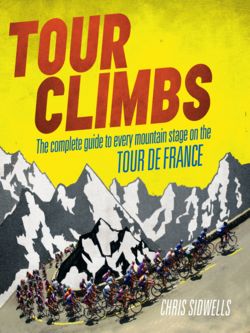Читать книгу Tour Climbs: The complete guide to every mountain stage on the Tour de France - Chris Sidwells - Страница 18
Blueprint for a Tour
ОглавлениеEvery year the Tour de France plays out to a pattern. After the first range of mountains, which in some years are the Pyrenees and in others the Alps, there are usually some flattish stages. On these the sprinters in the race, who never have a good time when the roads go upwards, fight for the stage victories, while the overall contenders try to stay out of trouble and conserve their energy for the next set of mountains. These stages are called transition stages, and they are often in the south of France, so are characterised by sun and warm weather and the compelling picture of glittering bikes and bright colours streaming through a patchwork of vineyards, sunflowers and lavender fields.
The second major mountain range often decides the winner of the Tour de France. Most years there are a number of riders who still have a chance at the beginning of this part of the race, but coming out of the second mountains there is often just one man left with a commanding lead. On the occasions where that doesn‘t happen, a time trial held on the penultimate or even last day of the race will decide the outcome.
Many things can cause riders to come unstuck in the second set of big mountain stages. Riders who are strong in the Alps can find the Pyrenees less to their liking, because the climbs of the two ranges are different. Alpine climbs tend to have uniform gradients, the Pyrenees don’t, and even the weather can be different. Another problem is cumulative fatigue. Most pro riders perform well for two weeks, but only the best are strong in the third week of the Tour de France.
The mountains are crucial to the Tour. Their evocative names; the Galibier, Alpe d’Huez, Mont Ventoux, the Tourmalet and Peyresourde are mentioned in the sporting press for months before and after each race. They roll from the tongue as fans argue about who will be strong and where. Fathers tell their children stories about these places, and old men look back at when they raced and dreamed of conquering their lofty peaks.
The mountains are theatre in which the Tour de France is played out in front of its most loyal fans. On the biggest peaks the diehards will arrive with their tents and camper vans up to three days before the race is due to pass. On the day there can be as many as half a million people on one climb, all cheering, drinking, eating and sharing the moment in a big party.
The mountains are where the greatest battles of this historic race have been enacted, and its tragedies played out. In the heat of competition they are fearsome places to be, but away from that, taken at whatever pace you decide, conquering their slopes is something that any reasonably fit cyclist with the proper equipment can do. I hope that this book will help you on your way.
Lucien Van Impe – simply the best © Universal/TempSport/Corbis
